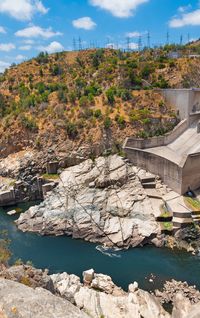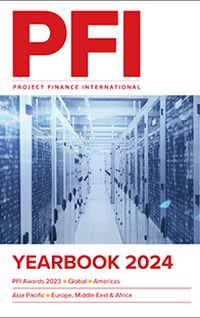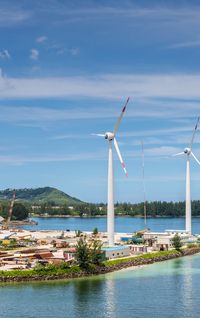Buying a pan-African independent power producer with low-risk debt from local banks only might not sound intuitive but Masdar and its partners have proven it is possible. They are now readying to expand their African portfolio. By Cristiana Sandeva.
Infinity Power, backed by Abu Dhabi’s omnipresent clean energy vehicle Masdar and other minority shareholders, acquired pan-African renewable energy platform Lekela from Actis and Mainstream for an enterprise value of US$1.5bn. The transaction is the largest deal closed to date in Africa for green energy assets, made possible by Masdar’s high level of liquidity on the equity side and a bespoke deal structuring. Alongside Masdar, Infinity’s other key shareholders include renewables developer Infinity Egypt, the European Bank for Reconstruction & Development and the Africa Finance Corp.
The debt for the deal is in excess of US$100m and was arranged by Mauritius Commercial Bank and Absa Bank of South Africa. There could have been a debt increase involving MCB and Absa again, PFI understands, but infinity managed to meet the extra funding needs with leverage.
“Based on the projected cashflow of the underlying assets, the debt sizing for the transaction was positively impacted by the long-term contractual nature of the projects’ future cashflow through PPAs, which allowed for a longer notional tenor and the strong credit enhancements embedded in the individual projects,” says Nutan K. Naginlal Modi, senior relationship manager for power and infrastructure at MCB.
Despite not being huge compared with the equity put in by Masdar-backed Infinity, the debt portion comes with noteworthy features as it was a cross-jurisdictional financing arrangement, which called for dual-currency tranche splits. It was arranged as a subordinated holdco financing package that enabled fundamental de-risking for a cross-border transaction within the African continent with local lenders. Of the total debt, 85% was senior and 15% was mezzanine.
The debt was arranged partially in US dollars and partially in South African rand, in equivalent amounts. MCB and Absa were joint mandated lead arrangers on the dollar tranche, while Absa was MLA on the rand portion. Mauritius Commercial Bank provided the dollar tranche and Absa Bank the rand tranche. The two tranches backed the acquisitions of specific assets owned by Lekela in different geographies, with the dollar portion supporting the acquisition of wind farms in Egypt and Senegal and the rand tranche supporting the acquisition of renewable power plants in South Africa.
All of Lekela’s assets, both the operational ones and the those at various stages of development, are operated by subsidiary special purpose vehicles that raise project financing on their own balance sheets. The project companies themselves are registered in the actual countries in which the projects are developed, while their overstructures are registered in Mauritius or in the Netherlands. The Lekela vehicle that has been acquired by Infinity is also Dutch-registered. This structuring of Lekela’s SPVs’ project financings allowed for the structuring of a smooth subordinated holdco debt facility.
When the teams started working on this transaction, there were virtually no precedents to base it on in the African market. The subordinated holdco structure allows the acquisition debt to sit way above the project companies owned by Lekela and allows it to rely on up to US$200m of dividend upstreaming from subordinated project finance debt borrowed by the project company vehicles. In terms of margin, the acquisition debt comes with a premium margin over the subordinated project finance debt.
The margin for the existing project finance loans on the operational projects was used as a base to arrive at the margin for the acquisition finance debt, and a premium was added to reflect the structural subordination of the debt. The margin on the mezzanine tranche was much lower than that on the senior debt, which was about double the mezzanine margin, PFI understands.
"From a pure margin point of view, though, there wasn't a significant differentiation between the rand and dollar splits, as the debt service benefits from cashflows from multiple sources," say Gordon Stewart and Tom Jamieson, partners at London-based law firm Bracewell, which was legal adviser to the lenders. "Because the debt is serviced by cashflows from multiple assets, the risk of default at the holdco is much lower," Stewart and Jamieson confirm. "If one project, for instance in Senegal, goes in lockup, or if a project defaults, you still have other active assets on which you can rely."
The acquired pipeline includes seven operational projects with a combined capacity of about 1GW, of which five are in South Africa, on is in Senegal and one is in Egypt. The project financing for the assets in Egypt and Senegal is mainly backed by development finance institutions, while the PF on the South African assets is backed by local commercial banks plus DFIs. The equity for all projects was always provided by Actis and Mainstream, usually covering between 30% and 40% of the projects’ development costs.
“This innovative debt structure provided by the MLAs has the potential to serve as a framework for future African holdco/portfolio financings in the context of acquisition financing and dividend recapitalisation, especially when the transaction involves multiple assets distributed across one or more jurisdictions,” concludes Modi.
Mainstream and Actis originally co-founded Lekela in 2015. “When it was launched for sale, it was very attractive as a portfolio: long-term stable PPAs, good operational capacity , and a fully integrated independent power producer on the African continent,” Stewart and Jamieson note. The platform was put up for sale in July 2022 and the acquisition by Infinity was announced in March 2023.
Looking back at the deal, Jamieson and Stewart point at three key challenges: the novelty of using a structurally subordinated financing for African power assets, a multi-jurisdiction portfolio comprising three African jurisdictions, and each jurisdiction having different currency revenues across euros, dollars and rand.
“The way we overcame this was by spending a lot of time with both the bankers leading the negotiations with their clients but also their credit committee processes in order to get them comfortable with the way in which the novel risks of these structures are effectively mitigated,” the lawyers say. “This also involved working with the credit analysts who were running the sensitivity modelling for the asset base in order to determine the debt sizing that was capable of being supported by the cashflows from this portfolio of assets.”
A related challenge with respect to the sensitivity analysis has been the use of M&A-purposed buyside reports on the assets and their yield curves, Jamieson and Stewart add. Due to the structure being a hybrid acquisition financing this is not uncommon; however, “given the already novel nature of the subordinated structure we needed to manage the finance documents parameters carefully. The way in which we unlocked this issue was with contingent upsizing mechanics to allow the sponsors to increase the debt sizing where a revised technical report commissioned by the lenders showed additional head room was available in the financing base,” they explain.
For future transactions of this type, Bracewell suggests that it is essential to establish engagement with credit committees at the earliest stages of dealmaking, which enables advisers to manage expectations around the security package over the collateral pool and around risk mitigations for novel financings where the structure does not easily fit into their previous credit metrics.
It is key to ensure that all advisers are feeding into the key sensitivity analysis to ensure that the modelling of the cashflows takes into consideration the project and concerns specific to the relevant jurisdiction, alongside risk mitigants available.
Currency alignment and hedging strategies can be perfected in the future, Bracewell suggests. It will be important to ensure matching of currency between debt tranches and revenues as well as the use of increasingly sophisticated dynamic hedging strategies to provide more flexibility for borrowers while effectively mitigating exposure to the lenders.
With several other large portfolios having not yet been exited as well as multiple similar financial sponsors building aggregated platforms with multi-jurisdictional portfolios, “we expect to see a number of similar deals to the Lekela holdco debt structure being implemented”, Jamieson and Stewart comment.
In addition to these structured financings for power assets, the deregulation of offtake arrangements in several Sub-Saharan African countries may slowly but surely lead to a steady rise in projects looking for merchant offtake solutions, trying to mirror the boom in merchant projects and trading platforms in the UK and Europe. In Africa, this may become the case both for spare capacity from existing operating assets that are looking to diversify their revenue sources away from state utilities, and from greenfield projects looking to sell exclusively into the Southern African Power Pool (SAPP).
In South Africa, corporate PPAs and C&I offtake-backed projects will continue being on the rise, paving the way for more IPPs to grow. On the public procurement side, there is likely to be some adjustment taking place as projects that bid into and won PPAs in the earlier public procurement programmes rounds try and adjust to global supply chain issues and cost inflation.
“That falls more acutely on African projects where currency FX pricing has moved against emerging markets, thereby exacerbating the impact of cost inflation,” Jamieson and Stewart observe.
“The other interesting development we might see is the return of gas and the renewed importance of mining,” they add. “With the global cost inflation of renewables supply chain eating away at reductions in tariffs that have been gained by utilities over the previous decade, there will be political pressure to keep energy prices low. In jurisdictions that have readily available domestic gas supply there will no doubt be political pressure to greenlight new gas generation where it offers significant additional generation capacity at reasonable tariffs,” they say.
![]()
To see the digital version of this report, please click here.
To purchase printed copies or a PDF of this report, please email leonie.welss@lseg.com














